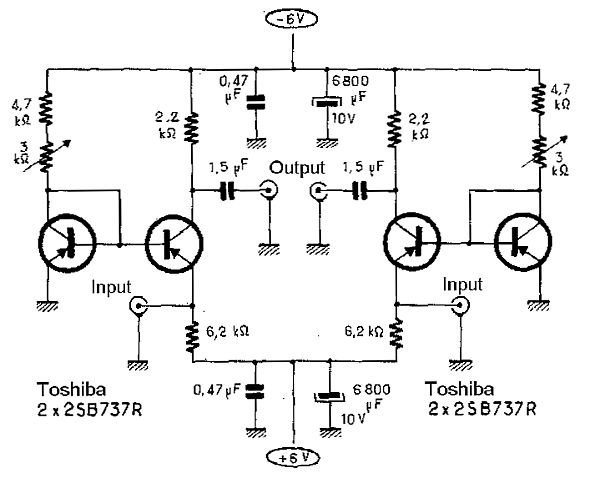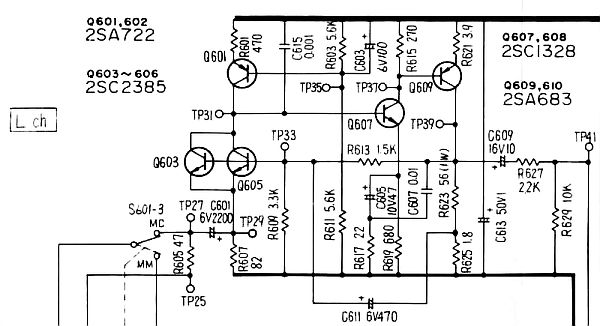I don't think that is a differential. The extra transistors are just ground connected using a variable DC current to they can bias the input device emitter to be 0V so it can be DC coupled. The extra junction's noise is adding to the input device so not the quietest solution. A few thousand uF shunt across those devices wouldn't hurt.mediatechnology wrote:Thanks Richard.
One thing that's not obvious in that circuit is the collector load.
For our readers it's the grounded 1K at the output.
I also spotted a non-floating supply version having separate collector loads to split supplies.
The common base topology looks ideal.
I tried a THAT1512 in common base with In+ and In- grounded.
It's similar topology to the mic preamp-based summing amp circuits you see in the SSM applications.
Balanced input is fed to Rg+ and Rg-.
The cartridge and termination, in parallel, serve as Rg and set gain.
It works, but the internal resistor values of the 1512 are not suitable and it doesn't lend itself to paralleled devices.
There are also active current sinks in the NPN emitters vs. resistors to improve linearity in mic preamp applications.
A single 1512 in this configuration isn't quiet enough.
There's also no control of gain - it's determined by the cartridge and it's termination.
There just aren't many common-base audio circuits for moving coil preamps published.
I've been asking myself "Why aren't there any common-base opamp-assisted fully-differential instrumentation input high gain moving coil preamps?"
I found this gem which was apparently published by Jean Hiraga in "L'Audiophile."
Common Base Moving Coil Phono Preamp, Jean Hiraga, L'Audiophile.
It's not as simple or elegant as Leach and Lee but it is floating input.
It looks very similar in a way to Leach's "Current Mirror" common base moving coil preamp only with all PNP and has split balanced inputs.
I don't think the original Hiraga used 2SB737s.
Seems like Hiraga could be used with helper op amps to have more gain than a head amp.
What's cool about the Hiraga is that it is a common base differential pair....
You just don't see those often.
I am not aware that toshiba ever made 2sb737s.. they were developed by a small Japanese company (Toyo something) for head amps. First ROHM distributed the parts then bought the company and branded them ROHM.
FWIW I've never been a huge fan of common base preamps. What is the input impedance of an emitter? Pretty damn low and not very linear(?).
JR


